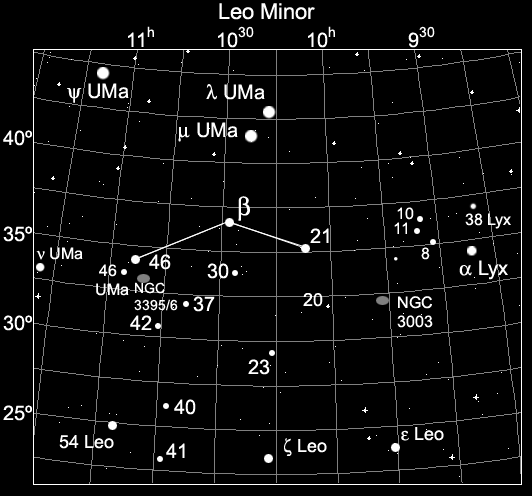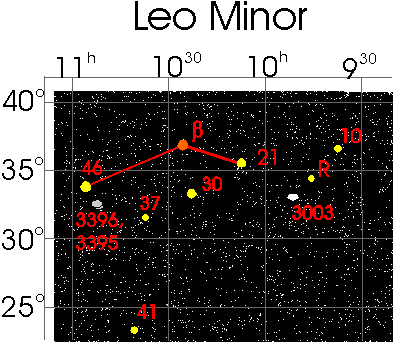
Leo Minor hasn't a lot to offer, but if you are a binary star observer, and in possession of a rather large telescope, then beta Leo Minoris is a recent challenge. Even if you aren't a binary specialist, just knowing where Leo Minor is found is part of knowing the stars.

Beta Leo Minoris is the brightest star in this constellation, the only constellation in the northern hemisphere with no alpha'.
Beta LMi is a very rapid binary, with the companion completing one revolution every 37.9 years. This 6.0 companion is quickly widening its separation from the 4.6 primary. The J2000 values are 190º and .06" but in just fifteen years the values are much more favourable for viewing: 225º and a separation of 0.53", the widest separation this star will achieve before it once again approaches the primary orbit. To find beta Leo Minoris, it's easiest to begin in Leo to the south. Starting at gamma Leonis, move three full fields of vision to the north. Ursa Major is very close by. Place beta LMi at the bottom of your FOV, the two bright stars at the top are mu UMa and lambda UMa. On the other hand, moving ten degrees east of beta LMi will also bring you to Ursa Major -- its most southern stars xi and nu. Xi UMa is particularly interesting as a binary and is described in "Ursa Major".
